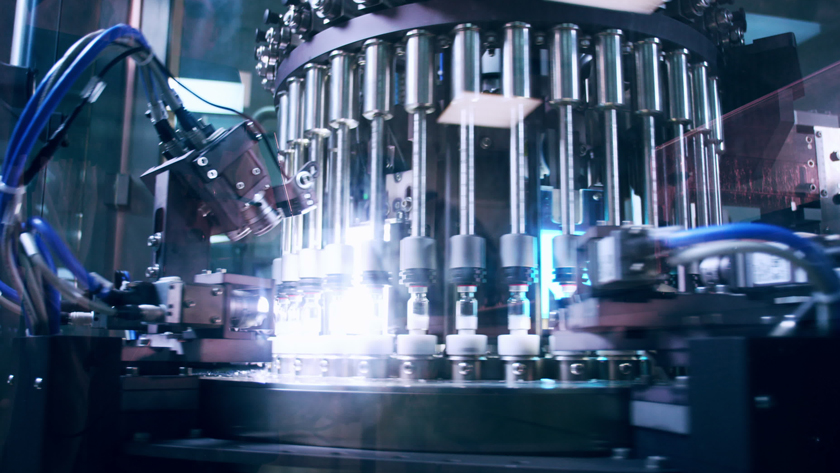Pharma manufacturing can digitalise its way round the next crisis

The turbulence of the last three years can make it seem as though pharma manufacturers have been operating in an atmosphere of non-stop crisis.
COVID-19 erupted, mutated, and was supplemented by the challenges of monkeypox and the need to catch up with major treatment and immunisation backlogs accumulated during the pandemic.
At the same time, the industry must address the long-term difficulty of providing essential medicines and health services to the high percentage of global population that cannot access them because of costs.
The net effect has been to stimulate change in every aspect of the pharma industry - an industry not exactly known for its embrace of manufacturing innovation.
Today, with more crises potentially awaiting around the corner, companies recognise how smart manufacturing improves efficiency and visibility across processes, boosting timely, global access to medicines, vaccines, and diagnostics, including those in low- and middle-income countries.
A new study by AspenTech in collaboration with FT Longitude confirms, for example, how digital transformation is on the rise in pharma to meet the demands of such new modalities as cell and gene therapies, and biologics. These therapeutic innovations increase demand for greater flexibility, agility, and transparency – greater than is currently available in most manufacturing environments.
Digital transformation has many different aspects, of course, but it is possible to pick out the most important ways technology and automation can support pharma companies to mitigate increased complexity and help respond fast to challenges and opportunities in the years ahead.
Crisis readiness and digital workflows
Removing manual pen-on-paper processes should be an obvious first step. In times of accelerated process design, pharma companies must drop manual workflows that risk clerical errors and data integrity violations. Digital batch execution management, electronic lab notebooks, and factory dashboards can remove risk from these error-prone processes. Digital workflows also facilitate collaboration along the product lifecycle, enabling data-driven decision making and improving inspection readiness.
These capabilities also help accelerate process design and scale-up, as was necessary during the battle against COVID, and reduce risk of compliance delays, such as those encountered during this year’s outbreak of monkeypox. Shifting all remaining manual workflows to secure digital processes would go a long way towards enhancing preparedness for any future crises.
Fast implementation of new processes through modelling and simulation
One common characteristic of a crisis environment is the need to develop and scale up new processes in a timely manner with limited material resources. This is where mechanistic modelling of key process operations plays a pivotal role. This approach exploits subject matter expertise in engineering, biology, and chemistry to streamline development and scale up process and product design, without compromising quality.
A highly-established company in Japan used simulations from mechanistic models to understand the reaction and crystallisation kinetics and key causes of impurities of a new active pharmaceutical ingredient. Its engineers employed these insights to design mechanical improvements. The benefits included reduction of impurities from 500 ppm to just 20 ppm.
Process analytical technology to boost efficiency
Yet, what good are implementations of digital solutions if the existing data streams offer limited value? Today’s operating units do generate a wealth of process data, but this is not always sufficient for critical monitoring, control, and release operations. The effectiveness and reliability of process analytical technology (PAT) has improved greatly in the past several years, and it is now poised to greatly enrich these data streams.
Process intensification via advanced (continuous) manufacturing is one scenario where PAT can be particularly impactful, as it can provide timely and relevant information to support closed-loop process verification and control, real-time release testing, and product diversion.
One company used PAT to support conversion of an existing batch process to a more agile and “lower-footprint” continuous process, quantifying two critical quality attributes (CQAs) online every few seconds, using UV-Vis spectroscopy technology. Such timely and frequent material analyses enable real-time release testing (RTRT), and thus a transition away from offline lab testing, reducing QA costs. In addition, control of one of the CQAs is automated through a programmable logic controller that adjusts critical process parameters, even as critical material attributes and environmental conditions change, ensuring that the vast majority of all production is within specification limits.
Staying one step ahead of unplanned downtime and disruption
During an emergency, there is precious little time to procure, install, and validate new equipment for the increased volume of development, manufacturing, and distribution operations and, in fact, some existing assets might need to be repurposed to address the emergency. This means that asset management and maintenance are particularly crucial to operational readiness and agility in such scenarios.
Asset Performance Management (APM) solutions, combined with machine learning models, support predictive and prescriptive maintenance of this equipment, helping to avoid unplanned shutdowns that can lead to development and supply disruptions. Furthermore, some APM solutions are very democratised, allowing asset experts without a data science background to build and optimise effective asset agents via an intuitive interface, while also allowing data scientists to “bring their own models”.
Ensuring on-time delivery of life-saving medicine
While boosting the agility and efficiency of manufacturing processes, pharma businesses must also increase preparedness for global supply chain disruptions. Those working in Supply Chain Management (SCM) and scheduling in pharma have long appreciated this, considering the complexity and fragility of the many interwoven supply chains in the industry.
Digitalisation of other operations has effectively laid a path for digital technologies supporting scheduling, SCM, and supply chain optimisation workflows. Regarding the latter, today’s SCM solutions enable one to simulate the impact of various disruptions that we have come to know during the COVID pandemic, including raw material access, labour shortages, and national lockdowns. Organisations can then use the resulting insights to minimise disruption of supply of critical medicines at times of volatility.
Digitalisation will have a massive impact on growth in the whole of the pharma industry’s value chain, from discovery to R&D to the supply chain. Much is underway, but much more needs to be done. Many have already shown remarkable responses to recent global crises, and this can build the foundation for more widespread activation of digitalisation initiatives to build resilience and ensure future business agility.
About the author
 Chuck Miller, director of solution consulting at Aspen Technology, Inc. received his B.A. in chemistry from Oberlin College and his Ph.D. in analytical chemistry from the University of Washington. He has over 30 years of experience in applying process analytics and chemometrics to research and manufacturing problems in several industries, including chemicals, foods, materials, medical diagnostics, and pharmaceuticals.
Chuck Miller, director of solution consulting at Aspen Technology, Inc. received his B.A. in chemistry from Oberlin College and his Ph.D. in analytical chemistry from the University of Washington. He has over 30 years of experience in applying process analytics and chemometrics to research and manufacturing problems in several industries, including chemicals, foods, materials, medical diagnostics, and pharmaceuticals.













